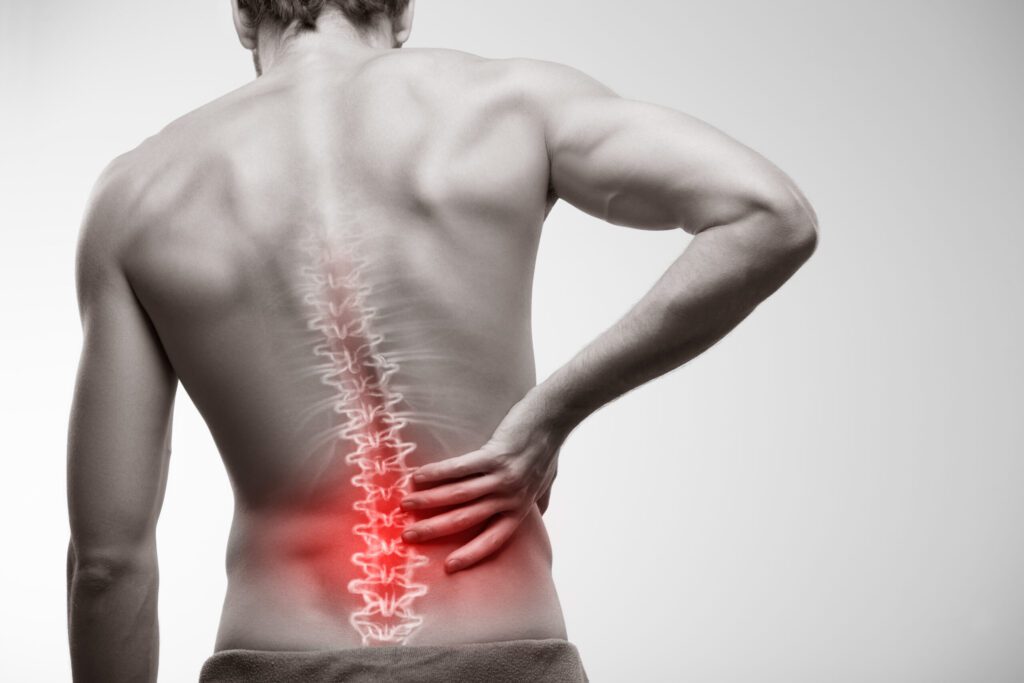What’s the Root Cause of Your Back Pain?
Back pain is an unpleasant part of life that most people will experience at some point in time. While back pain is uncomfortable, most back pain is not a medical emergency. However, there are some instances where back pain is a symptom of something more serious. Take our quiz to learn the basics of back pain and how to determine whether it’s an emergency.
- True or false? Approximately 80% of adults will experience back pain in their lives.
- True or false? Most instances of back pain can be traced to muscle strain, a fall, or lifting something heavy.
- Which of the following is NOT part of the most common causes of nonemergency back pain?
a. Muscle or ligament strain, such as from repeatedly lifting heavy objects or twisting your back quickly.
b. Bulging or ruptured disks; the cushioning between the bones in your spine can bulge or rupture and press on a nerve.
c. Arthritis. Osteoarthritis, the most common type, often causes back pain.
d. Overeating. Eating too much in one sitting can lead to back pain.
- True or false? Though back pain may make you want to lie down and remain immobile, continued light activity and stretching can help in recovery.
- Which of the following are options for treating most back pain?
a. Doing regular activities and even light exercise.
b. Taking over-the-counter pain medications, such as ibuprofen, naproxen, or acetaminophen.
c. Applying ice and/or heat.
c. All of the above
- Preventing back pain is the most desirable option. Which of the following are things you should do to prevent back pain?
a. Exercise, including strength training for your back and core muscles, and activities that increase flexibility.
b. Sit, stand, and lift correctly.
c. Maintain a healthy weight.
d. Stop smoking.
e. All of the above - True or false? Most back pain should go away within 72 hours after resting and applying ice.
- Which of the following pain symptoms are signs that your back pain may be something serious?
a. The pain results after a fall, blow to your back, or other injury.
b. The pain is constant or intense, especially at night or when you lie down.
c. The pain spreads down one or both legs, especially if the pain extends below your knee.
d. The pain causes weakness, numbness, or tingling in one or both legs.
e. All of the above - Which of the following are additional symptoms accompanying back pain that may indicate a more serious problem?
a. The pain occurs with swelling or redness on your back, which could indicate an infection.
b. The pain accompanies unintended weight loss.
c. The back pain is accompanied by new bowel or bladder control problems.
d. All of the above - True or false? Serious medical issues that feature back pain as a symptom include a torn muscle or ligament, a problem with an internal organ, a nerve compression condition, a stroke, or a spine infection.
compiled by ERIKA ALDRICH / resources: The Mayo Clinic and UT Southwestern Medical Center
ANSWERS:
- True. Most back pain can be traced to a specific physical cause.
- D. Overeating. All the rest are common causes of back pain.
- True. Staying active can help to alleviate back pain.
- D. All of the above. Any of those listed should improve most back pain.
- E. All of the above. Exercising with a focus on core muscle strength and flexibility, maintaining a healthy weight, using correct form, and not smoking can all help prevent back pain.
- True. Watch for back pain that doesn’t lessen after three days or includes additional symptoms.
- E. All of the above. The nature of your back pain can indicate a serious issue as well.
- D. All of the above. Back pain accompanied by certain symptoms can indicate a more serious problem.
- True. Back pain can be a symptom of several more serious medical conditions.
